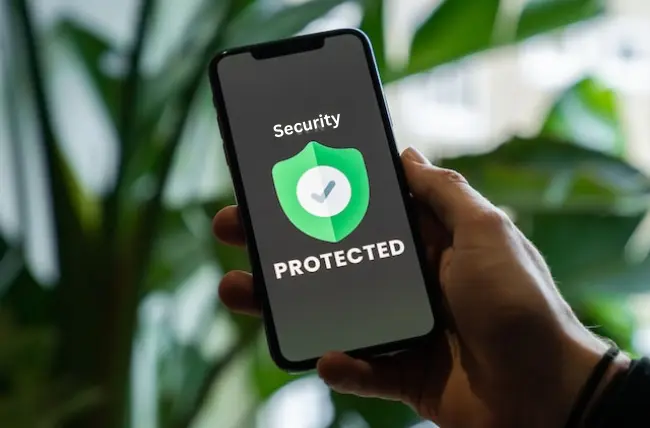Protecting sensitive information is of utmost importance. The growing frequency of data breaches emphasizes the urgency to establish strong security measures. We will outline essential strategies to strengthen your digital defenses and prevent unauthorized access to your data.Here, We will give you Tips for Preventing a Data Breach.
Secure Password Management
Creating strong and secure passwords is crucial in protecting against potential breaches. Weak or easily guessed passwords present a significant accountability. To enhance security, it is important to employ complex and unique passwords, as well as implementing multi-factor authentication for an added layer of protection. Furthermore, educating all individuals involved about the importance of using strong passwords and the risks associated with lax practices is imperative.
Complex Passwords
Creating strong and secure passwords is an essential part of effective password management. To ensure maximum security, it’s important to use a combination of uppercase and lowercase letters, numbers, and special characters. Avoid incorporating easily accessible personal information like birthdays or names into your passwords. Regularly updating your passwords and refraining from reusing them across multiple accounts are also critical measures for maintaining security.
Multi-Factor Authentication
To enhance security, multi-factor authentication adds an extra layer by requiring users to provide multiple forms of verification before accessing sensitive data. This can include something they know (such as a password), something they have (like a mobile device), or something unique to them (such as a fingerprint). By implementing multi-factor authentication, the chances of unauthorized access are significantly reduced.
Data Backups

Having recent backups is crucial in the event of a data breach. Regularly backing up your data ensures that even if your primary data is compromised, you can restore it from a secure and unaffected source. It’s important to establish a routine backup schedule and regularly verify the integrity of backup files to ensure they are usable when needed.
Automated Backup Solutions
Automated backup solutions are a valuable resource for streamlining the backup process and reducing the potential for human error. By configuring these tools to regularly perform backups at specific intervals, businesses can ensure a reliable and seamless protection against data loss.
Offsite and Cloud-Based Backups
To enhance the safety of your backups, it’s advisable to store them offsite or in the cloud. This extra layer of protection ensures that your data remains preserved even in case of a physical breach or disaster. However, selecting a trustworthy and secure cloud service provider is crucial to uphold the integrity and confidentiality of your backups.
Disaster Recovery Plan
In the event of a data breach or other catastrophic events, having a disaster recovery plan is crucial. This plan outlines the necessary steps to be taken, providing a roadmap for a swift and effective response to minimize downtime and potential losses. It should cover a detailed inventory of critical systems and data, as well as assigned responsibilities for key personnel.
Conducting Risk Assessments
Performing regular risk assessments is crucial in identifying vulnerabilities and weak points within your existing disaster recovery plan. By proactively addressing these issues, you can strengthen your defenses and improve your preparedness to effectively respond to unforeseen events.
Simulated Incident Response Drills
By regularly conducting incident response drills, your team can become familiar with the steps outlined in the disaster recovery plan. This hands-on practice ensures that each team member understands their specific roles and responsibilities, promoting a coordinated and efficient response in case of a breach.
Third-Party Security

In today’s digitally interconnected landscape, it’s important to recognize that the security practices of third-party vendors and partners can have a direct impact on your own data security. Evaluating the cybersecurity measures of these external parties is crucial to ensure that they align with your established standards and requirements.
Due Diligence in Vendor Selection
Before partnering with a third-party vendor, it is essential to conduct comprehensive due diligence to evaluate their security protocols. This involves examining their past performance, certifications, and any security audits they have undergone. Choosing vendors who demonstrate a strong dedication to security is paramount in ensuring the protection of your data.
Monitoring and Auditing
It’s important to not treat the assessment of third-party security practices as a one-time task. Instead, it’s recommended to establish continuous monitoring and conduct periodic security audits to ensure that vendors are consistently meeting your security requirements. It is crucial to address any identified vulnerabilities or non-compliance issues promptly.
Security Audits and Assessments
Keeping your security infrastructure strong requires regular security audits and assessments. These evaluations systematically analyze your current security measures, pinpointing areas that can be enhanced and identifying any potential vulnerabilities.
Scanning and Penetration
By using vulnerability scanning and penetration testing tools, you can proactively identify and address any weaknesses in your security infrastructure. These assessments simulate real-world attacks, giving you valuable insights into potential entry points for malicious individuals.
Audits and Regulatory
It is crucial to stay updated on industry-specific regulations and compliance requirements. Regularly conducting audits can ensure that your security practices are aligned with relevant standards and regulations. This not only safeguards your data but also helps mitigate the risk of facing penalties for non-compliance.
Conclusion
Preventing a Data Breach requires a comprehensive approach. This includes implementing secure password management, regularly backing up data, creating disaster recovery plans, evaluating the security practices of third-party entities, and conducting routine security audits. By taking these proactive measures, you can strengthen your defenses against potential threats and safeguard sensitive information. Additionally, these actions inspire confidence in stakeholders.
FAQs
How often should passwords be changed for optimal security?
To ensure optimal security, it is recommended to change passwords every 60 to 90 days. This practice helps reduce the risk of unauthorized access caused by compromised credentials.
What elements should be included in a disaster recovery plan?
A thorough disaster recovery plan should consist of several important components. These include identifying and documenting critical systems and data, assigning specific responsibilities to key personnel, outlining detailed steps for response and recovery, and establishing a clear communication protocol.
How can I ensure that my chosen cloud service provider offers secure backup storage?
If you want to ensure that your backup storage is secure, it’s important to select a trustworthy cloud service provider that has strong security measures in place. Look for certifications and read reviews that confirm their dedication to safeguarding data.
